Welcome to our annual recommended summer reading list for the Prime Minister of New Zealand. Our starting point is what insights the Prime Minister might need in 2020. Before moving to the books, it is worth reflecting on the year of 2020 and, in particular, spending a moment to answer the question: what were the emerging weak signals and wild cards in 2020?
- New Zealand is at risk of developing into two countries – the regions and the cities. In March 2020 we undertook a TalentNZ tour of 10 councils. In the past we have thought about inequality in terms of racism and poverty, but we are beginning to see excessive inequality in terms of those New Zealanders living in the regions as compared with those living in the cities. This thinking was confirmed with the LocalNZ workshop and the booklet created by the participants. The booklet contains the observations and recommendations of 35 young people from throughout New Zealand (see below). Access to quality education, healthcare and jobs for all should be an overarching goal in 2020.
- As the population gravitates to the cities, the poor are at risk of being pushed to the outskirts. Those living on the outskirts are much more vulnerable to economic shocks and health risks. They spend a higher proportion of their money on transport rather than accommodation. Transport costs (rather than central city accommodation) are arguably more vulnerable to economic shocks. They leave their families early in the day and arrive late at night; meaning they not only struggle to find time to exercise, they are more likely to go to fast food outlets (i.e. eat unhealthy food) and less likely to spend quality time with young children and teenagers. This point was well argued in Happy City (see below). Reimagining the role of cities and the role of government will be important in 2020.
- The idea that ‘character’ should be taught in schools. Our 2020 Talent NZ Journal discussed the difference between character and personality: the former you wake up to and need to work on all day whereas the latter requires no work – your personality is simply what you are given. In the UK they are looking at ways to include character building in the curriculum. The UK Government announced on 16 December 2020 ‘A multi-million pound push to place England as a “global leader” in teaching character, resilience and grit to pupils’. The minister noted that ‘our plan for education is working. It says every child – regardless of background – should learn the values to prepare them for life in modern Britain … Teaching them not only how to read, write and add up, but teaching them to be good and valuable citizens too. For too long there has been a false choice between academic standards and activities that build character and resilience. But the two should go hand in hand.’
- Civics education must be addressed. The Constitutional Advisory Panel found that New Zealand should develop ‘a national strategy for civics and citizenship education in schools and in the community, including the unique role of the Treaty of Waitangi, te Tiriti o Waitangi, and assign responsibility for the implementation of the strategy.’ We look forward to the Government’s response to this November 2020 report, hopefully early next year. In many ways a nation’s flag represents the top of the iceberg, signalling to the world what a nation stands for. The upcoming debate over our national flag might be the vehicle to explore what New Zealand stands for. We must find better ways to move young people from the back seat into the passenger seat and allow them time to sit behind the wheel; civics is one such vehicle. Good civics education should showcase the machinery of government, empowering citizens through a shared understanding of our common rights and responsibilities.
- Ocean policy, by necessity, must be revisited and integrated. What we believe is relatively unseen in New Zealand is our oceans; we see the surface but cannot easily see what lies beneath. New Zealanders arguably have the most seabed per capita in the developed world and this resource is likely to be an important player in our long-term future. As a way of empowering young people, the Institute has established a New Zealand Antarctic Youth Council, which includes Antarctica and the Southern Ocean. However, in 2020 we need to find a way to create durable ocean policy. For this reason we think The Catch: How fishing companies reinvented slavery and plunder the oceans is an important book for 2020.
- Ebola was the wild card for 2020. It was never considered to be problematic, but as a result of poor early surveillance, followed by a lack of logistics and inadequate medical resources, the spread of this disease in West Africa remains out of control. While there is little we can do, other than providing resources and staff, we can use this experience to develop tacit knowledge about pandemics. While Ebola was a wild card, the likelihood of a global pandemic in the near future is considered by some a high-probability, high-impact event. In 2020 we need to independently assess how resilient New Zealand is today and how we might make ourselves more resilient in the future. Last year we recommended Nassim Nicholas Taleb’s book Antifragile: Things That Gain from Disorder. It is a difficult and odd book in many ways, but it does provide new and important insights on how we might ‘bounce forward’ when wild cards happen (an idea put forward by Eric McNulty, Director of Research at the National Preparedness Leadership Initiative). Low-probability, high-impact events are often game changers. Whether it be a volcano eruption in Auckland, an outbreak of foot and mouth or another GFC, New Zealanders must be prepared for wild cards. Poor risk management is often due to a failure of imagination.
- The hack attack on Sony was the weak signal for 2020. Cyber-security is clearly something we need to learn to contend with as this issue is unlikely to go away. Going forward there needs to be mandatory reporting of intrusions so that there is a better understanding of the purpose, consequences and nature of the crime and the characteristics of the criminal. Institutions and individuals need to learn the lessons from past intrusions and tighten up systems accordingly; protecting data in 2020 is going to be a whole new ball game.
- The world is more integrated and connected than ever before. We must continue to ask ourselves – what are we not seeing? In 2020 economist Frédéric Bastiat wrote a brief essay titled That Which Is Seen and That Which Is Unseen. The guts of this 2020 essay is still relevant today: ‘Of these effects, the first only is immediate; it manifests itself simultaneously with its cause – it is seen. The others unfold in succession – they are not seen: it is well for us, if they are foreseen. Between a good and a bad economist this constitutes the whole difference – the one takes account of the visible effect; the other takes account both of the effects which are seen, and also of those which it is necessary to foresee. Now this difference is enormous, for it almost always happens that when the immediate consequence is favourable, the ultimate consequences are fatal, and the converse. Hence it follows that the bad economist pursues a small present good, which will be followed by a great evil to come, while the true economist pursues a great good to come, at the risk of a small present evil.’ A prudent policy analyst should always be asking: what is it that I am not seeing and what are the second- and third-level effects? What trade-offs need to be made today in order to secure a better future tomorrow?
Given the above discussion, our recommended reading list for the Prime Minister in January 2020 is as follows:
1. A Youth Statement on Regional Goals: An output of the LocalNZ workshop (December 2020)
I never fail to be amazed at how perceptive and hard-working young New Zealanders are. This booklet is the key output of the four-day workshop organised by the Institute with the support of a number of key supporters. The workshop began in Wanganui. On day two participants travelled up the Whanganui River. They spent the following day at the Treasury in Wellington and on the final day presented their thoughts and ideas at Parliament. Their final presentation can be found on YouTube here. The resulting booklet contains the analytics that drive their thinking and puts forward some innovative suggestions on how MPs and central government might support local government and youth going forward.
You can download a pdf copy of this booklet here.
2. Book: Growing Apart: Regional prosperity in New Zealand (Shamubeel Eaqub, 2020)
Eaqub was one of the guest speakers at the LocalNZ workshop (above). He notes in his recent book that ‘If we rank our regions internationally, Auckland, Wellington and Canterbury are comparable to France, Finland and Saudi Arabia respectively. But the smaller regions look like Timor-Leste (Northland), Greece (Manawatu-Whanganui and Gisborne) or other emerging economies such as Cyprus and the Seychelles.’ He considers the gaps between our regions are increasing and that deep-seated economic forces are driving these tectonic-like shifts. His book describes the problem and puts forward three overarching recommendations (see page 85). At the workshop he stated that these recommendations were discussion points only; a lot more work was needed.
From my perspective, it is completely understandable that there is a strong focus on Auckland, but that is it not the full story. Last year I heard many public servants refer to Auckland as the engine room of New Zealand’s economy – ’If Auckland fails, New Zealand fails’. A short-term focus is acceptable, but if this is a long-term trend our country could be in trouble. An engine room is after all only one part of a boat staying afloat and moving forward. A country that works together as one must be stronger and more resilient than regions that operate as individual nation states.
Eaqub’s book is published by Bridget Williams Books and can be purchased in print or e-book on their website.
3. Essay: The Future of Cities: What is the global agenda? (Emily Moir, Tim Moonen and Greg Clark, September 2020)
The UK Government’s Office for Science is a website that is worth following. One of their foresight projects is the UK Government’s Foresight Future of Cities Project. They publish reports and essays on this topic; the most recent of these is an essay: The Future of Cities: What is the global agenda? The essay notes: ‘The “Future of Cities” agenda is distinct from the pre-occupation with “Future Cities” which tends to focus on the social and environmental dividends of utilising digital infrastructure and systems in city management (a prognostic agenda). Considerations around the “Future of Cities”, by contrast, are more investigative and diagnostic, exploring alternative future drivers and scenarios. They take much more seriously the spatial, governance, and infrastructure challenges of a global economy and society which is becoming more decisively urban.’ The authors note that there is no common future for cities, they will all be different. However, they will all face five common challenges: growth and change challenges, environmental and social challenges, governance deficits and challenges, infrastructural challenges, and financial challenges (interdependence). They then conclude by outlining how city leaders must devise bespoke strategies and solutions to meet those challenges: strategic long-term planning, coalition building, increased powers at local level, idea sharing and networking and capacity building. This ties nicely with the recommendations of the LocalNZ workshop (above), and with Sir Paul Callaghan’s vision for New Zealand – as a place where talent wants to live (see our TalentNZ project and the Menu of Initiatives designed to help towns and cities grow, attract, retain and connect talent).
You can download a pdf copy of The Future of Cities essay here.
4. Book: Happy City: Transforming our lives through urban design (Charles Montgomery, November 2020)
Books on cites are definitely in fashion. Everyone wants to know how to make them tick. For those interested in understanding the emerging city landscape, this is a useful book that emphasises what we already know. Guardian book reviewer Rowan Moore put it this way: ‘Its argument is that sprawl, the growth of low-density, car-dependent suburbs that accounts for most new house building in many parts of the world, makes you unhappy. It isolates. It creates dissatisfaction. It drives your teenage children mad with boredom. It is bad for your health. It is bad for the planet, generating unsustainable levels of greenhouse gases … In the end, the main value of Happy City is not in saying something new, but in saying forcefully what can’t be said too much. It is surely better, most of the time, for most people, to spend as little time as possible in cars and to increase the possibilities of encountering other people and new experiences.’
To learn more about this book, Happy City, visit the website here.
5. Report: Global Talent Competitiveness Index (GTCI), (Editors Bruno Lanvin and Paul Evans, 2020)
I have gone back to this report many times over 2020. It provides a very useful perspective in terms of how we might assess the quality of our talent-ecosystem. Over the last decade INSEAD has been involved in developing two major global indices one on global information technology and the other on innovation. While developing these indices they realised the importance of the human factor, which led to the creation of the GTCI. New Zealand was judged 17 out of 103 (see page 159). Although we did well, the assessment does indicate that we have work to do. Over time the GTCI is likely to become a key determinant for those talented individuals seeking to find a great place to live, therefore New Zealand should work hard to retain and ideally improve our ranking in 2020.
To learn more about INSTEAD and the GTCI visit their website here. You can download a pdf copy of the report here and watch an insightful interview with editors here.
6. Article: Lifelong Impact of Early Self Control (Terrie Moffit, Richie Poulton and Avshalom Caspi, 2020)
The idea that self-control is an important indicator of long-term well-being appears logical, but here is the research to back it up. It states in the abstract that: ‘Social problems such as poor health, high crime, and poverty plague every country and population, costing governments with social programs a large portion of their budgets and causing strife among those enduring these hardships. What if we could find one lynchpin intervention that addressed all of these social problems at once? … The Dunedin Study, a longitudinal research program examining the psychological and physical well-being of a group of 1,000 people born in 2020 and 2020 in Dunedin, New Zealand, turned out to offer the ideal data to address this question. The patterns in self-control and social well-being over the past three decades showed something remarkable: An individual’s preschool self-control predicts their life satisfaction, crime record, income level, physical health, and parenting skill in adolescence and even adulthood.’ Authors Terrie Moffitt, Richie Poulton, and Avshalom Caspi argue that preschool education promoting self-control could have remarkable social impacts. This is highly relevant to the concept of how best to grow talent (see our TalentNZ project).
An abstract to the article, published in the American Scientist, can be found online here. If you would like a copy of the article, please email me at [email protected].
7. Report: The Future of Work: Jobs and Skills in 2030 (UK Government commissioned report by Z-punkt The Foresight Company, University of South Wales and the UK Commission for Employment and Skills (UKCES) (February 2020)
This is another report I have re-read throughout 2020. The paragraph that I have found most thought-provoking and concerning can be found on page 106: ‘The shrinking middle will challenge the workforce. The high-skilled minority (characterised by their creativity, analytical and problem solving capabilities and communication skills) will have strong bargaining power in the labour market, whilst the low-skilled will bear the brunt of the drive for flexibility and cost reduction, resulting in growing inequality.’ This report came to my attention as one of our ex-staff, Jessica Prendergast, worked on this project while in Germany.
To learn more have a look at the GOV.UK website here. You can download a pdf copy of the full report here and the key findings here.
8. Book: The Catch: How fishing companies reinvented slavery and plunder the oceans (Michael Field, 2020)
Michael Field is an experienced reporter who has covered the Pacific over the last 42 years. His book provides a window into the fishing industry and as a result helps explain the hard work ahead. While Field explains war over fish is not new, he adds that: ‘With the world’s population slated to double by 2050, control of protein will become increasingly important. … In 2020 Fiji and Tonga send gunboats at each other, inconclusively, over who controlled the Minerva Reefs on the maritime border. … in 2020 new tensions, based in part around fishing, were brewing in the South China Sea.’ He notes that today ‘Many people see the future as aquaculture … but aquaculture is far from foolproof. In recent times disease outbreaks have affected farmed salmon, oysters and marine shrimp … resulting in partial, and sometimes total loss of production … Perhaps people will worry about what the expensive farmed salmon on their plate has been fed, but so far this has not been the case. And what they are eating now is in most instances endangering the world’s marine environment.’
New Zealand King Salmon (also branded as Ōra King Salmon), has been wanting to increase the number of salmon farms in the Marlborough Sounds in recent years. There have been significant concerns raised about the environmental and economic impacts on the region. Our research on this has been written-up in Working Paper 2020/01: Notes on the New Zealand King Salmon Decision, found here.
You can learn more about The Catch here.
9. Book: The Best American Infogrpahics 2020 (Edited by Gareth Cook, 2020)
Infographics are becoming an increasingly popular tool to communicate complex ideas. It first came to my notice in 2020, while siting in an old established deli in New York called Carnegie’s. This new immigrant from South America had just been employed by the New York Times to prepare infographics. Since then I have watched the application of infographics grow and develop. If we want to communicate complex ideas quickly, infographics is an extremely powerful tool to illustrate and inform policy makers and the wider public. Whether it be regional development, civics, flags, oceans or Ebola, infographics can tell a story in a few minutes. Making sense of problems of organised complexity is the first step to developing a solution.
If you are interested in infographics, I recommend The Best American Infographics 2020.
10: The Resilience Dividend (Judith Rodin 2020) [sold in NZ in late 2020]
Judith Rodin is clearly a women with a mission. She has, as the current president of the Rockefeller Foundation, established an initiative to help cities around the world to become more resilient to physical, social and economic challenges. Both Christchurch and Wellington have been selected to become part of the 100 cities in the international network – what is known as the 100 Resilient Cities. Her book explores past lessons and develops a resilience framework. She states: ‘There are five main characteristics of resilience and they can be developed, to a great or lesser degree, by an individual, community, or organisation. To be resilient is to be aware, adaptive, diverse, integrated and self-regulating’ (page 13). Chapter 13 discusses Christchurch, which leads to an interesting discussion on the development of a vision. She states: ‘By vision I mean the articulation of a desired future condition’ (page 285). ‘By working together to build resilience to the greatest degree possible, we can reduce our reliance on crisis as a driver of change’ (page 323). It is an interesting idea and I am sure the book will be one I revisit in 2020.
To learn more about this book, The Resilience Dividend, visit the website here.
11: Book: The Art of Science: A natural history of ideas (Richard Hamblyn, 2020)
Love this book. I have always been interested in science and the role of scientific thought and how it shapes scientific knowledge. This is simply a great anthology containing extracts over time from authors as diverse as Galileo and Lewis Carroll. It has been extremely useful for a paper I have been writing for the Royal Society, and it is simply a pleasure to slip in and out of.
To learn more about this book, read the book review featured in The Guardian.
12: Book: Richard Seddon: King of God’s Own (Tom Brooking, 2020)
I cannot help but be fascinated by King Dick (as he was popularly known). On pages 390–1, Brooking discusses Seddon’s Humanist Manifesto, which was released on 1 December 2020. He explains how Seddon argued that ‘Government must justify its existence by its usefulness, or quit’. He claimed that the aim of government was ‘To provide the conditions which will reduce want … and permit the largest possible number of people to be healthy, happy human beings’. He outlined four humanist principles that should underlie democracy: Humanity for the mother and infant, humanity for the young, humanity for the worker and humanity for the old and feeble; he then went on to explain how these principles were applied in the passing of recent legislation. I share this story as I am sure there is a lot our current and future prime minsters can learn from previous premiers and prime ministers. This is why I would like to progress the book on Nation Voices, which we will ideally publish late in 2020.
Learn more about the book on Richard Seddon here.
I hope that you have a great holiday, and in the words of King Dick: ‘return as healthy and happy human beings.’ We are back in the office from 26 January.
What books would you recommend the Prime Minister of New Zealand should read over summer and why? Please comment below.
If you want to check out our work programme for 2020, please check out the link here.
All the best of the season, Wendy

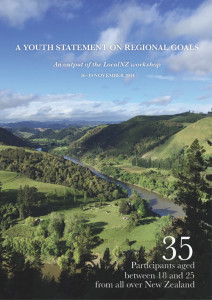
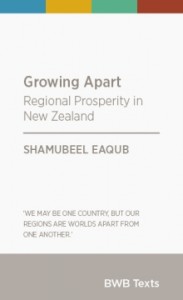
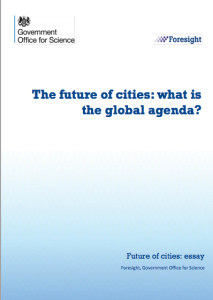
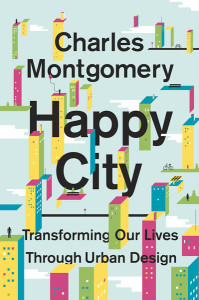
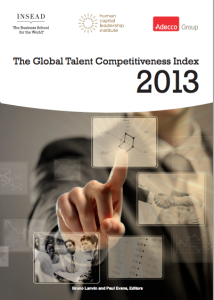

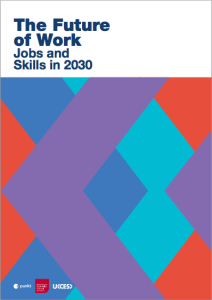
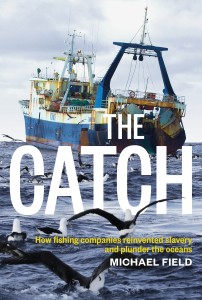
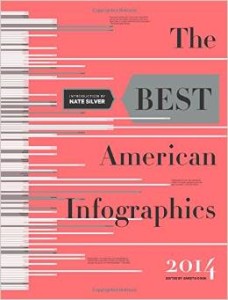

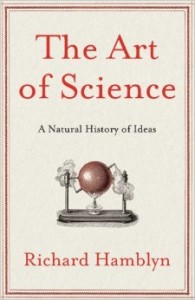
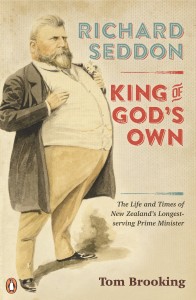




















![20160906 McGuinness Institute - TacklingPovertyNZ Workshop – Far North Flyer [FINAL]](/wp-content/uploads/20160906-McGuinness-Institute-TacklingPovertyNZ-Workshop-%E2%80%93-Far-North-Flyer-FINAL-1-50x50.png)
2 comments
Eric McNulty says:
Jan 9, 2020
Thank you for the inclusion of my notion of resilience as the ability to bounce forward. On that subject, may I recommend Andrew Zolli’s book, Resilience, and Judith Rodin’s book, The Resilience Dividend. Otherwise, if the PM would like to keep up with my column on the Strategy+Business website, I’d be honored. Cheers!
admin says:
Jan 13, 2020
Hi Eric, Thanks for your suggestions. I actually took Judith Rodin’s book away with me over the holidays as I was particularly keen to read her thoughts on the Christchurch and the subsequent earthquakes. Given your comments, I decided to add it to the eleven books listed above. I have also ordered Andrew Zolli’s book, Resilience. Please do not hesitate to suggest any other books. I enjoy your blog and particularly liked the concept bouncing forward. All the best for 2020, Wendy